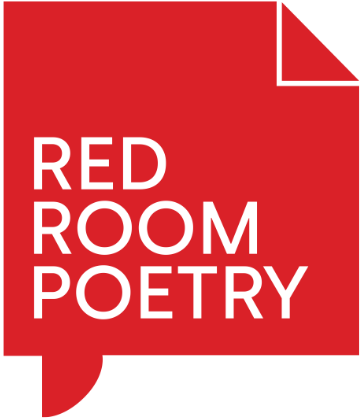Desert is a body
By Judith Nangala Crispin
Published 29 November 2023
I’ve walked here before, in the shadow of old Limbunya Station,
Lingiari’s heartland, where Wickham River veers toward the western sea
but never makes it—fraying instead to threads that vanish in blue clefts,
where the desert lifts in scrub and towering sandstone cliffs, then drops
to the Black Springs. Jutamiliny. Mt Rose is a splinter in the valley’s fist,
bounded by loneliness.
This place has brutal histories. There are ghosts.
I feel their gaze as I unharness the dog and drag a flower press
from my motorcycle panniers. The dog removes his goggles with a claw,
then vanishes, chasing a jackrabbit into grasslands. I call him back.
We shouldn’t have come here alone, the rockholes stark as gunshot wounds
and a light behind the trees—the colour of raw meat.
After the killings they ran brahmin cattle here.
Sunlight refracts through beer bottles, half-buried by sand.
A coil of fencing wire is a black-headed python. Light manifests.
To ask more than this would seem graceless.
There are places where the borders between planes are thinner.
You can see figures moving on the other side. Sometimes they cross.
I’m watching the dog run toward me in a cloud of other dogs—cloud dogs, sun dogs.
And Lily races behind them, her crowbar flung above her head.
This is how I knew her before the nursing home.
“Country,” she said, “is always trying on new shapes. Waterholes are lost.
The sand covers them. And maybe you’re facing north, but the sun’s high
and you just can’t be certain.”
She showed me the art of desert walking—count the sandhills,
scratch their number into your skin with a stick, a dead bird’s claw, a thorn.
Pile marker stones in the mulga. Cover rockholes with a fallen branch.
Desert walkers watch for changing wind. They seek counsel from talking plants.
Old trees regard them from the Jukurrpa—
or, in the small hours, circle around their camp. By morning the trees have gone,
leaving only rings of white ash between the swags.
Lily’s glimpsed them late at night, striding along the highway—
toward the lights of Alice Springs, their dark branches thrashing.
She doesn’t understand why people carry on about the way things were—
watching ceremony from the 1950s on YouTube.
All the people in those videos are dead now, but the desert is alive and speaking,
smoking too many cigarettes at the bus station—
just waiting for the thrill of resurrection that comes on cool night winds.
That’s all a person is, she told me—just dunes in shifting planes of air.
Lily’s never seen the Eiffel Tower, never stood in the glitzy European galleries
where her paintings sell for thousands. She’s not seen the Great Dividing Range—
but she knows the desert is a body, a macrocosm of smaller systems.
And she knows a human being has asteroids and orbiting planets,
Moon—left eye, right eye—the Sun. The mountain’s hand lifts
above the floodplains. On darker nights, the mallee is raven-haired.
The desert is always speaking in signs—nightjars crouched nervously in the road,
or seed-pearl geckos, flashing like electro-chemical signals—neurons, ozone,
sudden lightning on the range.
Spectacular storms unloose bodhisattvas of frogs
and toppled sheds. Water builds in torrents, drowning spiderflowers
and mulla mulla—carving arterial channels into clay, floods that vanish as quickly
as they come, hanging the low branches with debris. Skies in brooding metal grey
are pierced by ferocious stars—Microscopium, Eridanus and Aries.
A cyclops moon opens an eye inside the tabernacle of night.
Before Lily vanished into Rocky Ridge Aged Care Facility,
she told me how she was once shepherding a low fire through scrubland,
out back of Kalkarindji, when her legs began to tremble. The fire forked,
impelled, on burgeoning winds, into two glowing veins that raced toward the rubbish tip,
igniting fridges and broken-down cars—the piled asbestos sheets.
And how she stood there—the dogs streaming past her on heels of flame.
She was staring at something forming in the late December sky—
something shaped like a mountain.
The air whirled, cold and fast around her, and there was a sound like rushing wings.
Lily heard her own voice repeating ‘fuck’, ‘faark’. And she was a crow-thrown shadow,
on the face of a mountain forming in the sky—her long black dogs
streaking like firedrakes through sparks and falling ash.
And when she brought these things together in her mind—the mountain, sun-dogs, wings—
it felt like Gnosis, a revelation, the dingo-headed prophets descending—
and the black sun was over her in that moment,
a midnight thunderhead, a dark orgone electric that she recognised immediately as a brain—
a sparking pleroma, a mystical mountain concealing itself in haze.
And later they found her frozen, where the charlines branched,
still staring into the sky.
They bundled her into a nephew’s Dodge Charger, littered with hash pipes
and empty chip packets, its headlights withdrawing over potholes and out through hills slashed by community roads.
And after that, they began to weigh their options—respite homes or full-time care.
Sometimes we forge bonds without fully realising what they’ll mean to us later.
On this Jutamiliny night, Lily—no longer living, stooped at the foot of my swag,
moon-marked and speaking sign language (not to wake the dog).
And she told me how her cosmic mother weaves hatching snakes into the rain,
like the intermittent signals she receives from outer space.
She pronounces my name in this remembered Country—as night’s river flooded around us,
her hands still signing, still slicing the air. They sound like crows cleaning their beaks,
like brumbies pawing the loose earth.
“I don’t know what the desert is saying to me,” I tell her,
“I don’t know what it wants.”
And her hands answer—try to listen at this moment
and not the moment after. Collect, recollect.
Build yourself from scattered parts.
I could hear my own heart beating,
I could hear the desert’s pulse booming in my ears.
